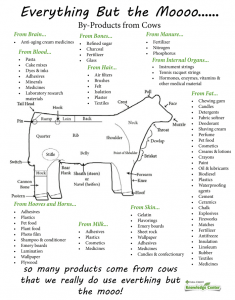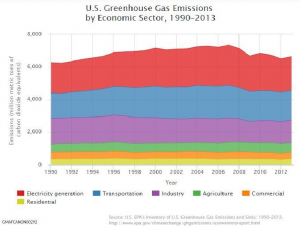The rumours are swirling, but how truthful are they? We’ve heard time and time again from people who say, “Go vegan, save the planet!” But let’s investigate those claims, shall we?
First off, livestock don’t only give us meat. What many people may not be aware of is there are actually 185 uses for a pig, from cement to renewable energy, paint to brushes, and life-saving pharmaceuticals. If you haven’t yet seen this TED talk from Christien Meindertsma, check it out! There is lots of fascinating info there. There are also these byproducts that come from cattle.

Each year hundreds of millions of animals go to market for food, but when you consider all the products they produce for us, it is quite remarkable to know that no part of any animal goes to waste, generally speaking.
Secondly, fruits and vegetables are fertilized by animal manure. That’s right — without livestock, we wouldn’t have nearly enough produce to feed the planet. No animal poop, no veggies.
But most importantly, agriculture actually only makes up 8 percent of greenhouse gas emissions, with only 2 percent of that coming from cattle. There is a movie on Netflix called “Cowspiracy,” but that’s about all it is. A conspiracy theory based on an outdated retracted “study” to push a “go vegan” agenda by people who aren’t sharing the real truth about the livestock industry and who ask for donations. Leonardo DiCaprio is one of the executive producers, and fear sells. I don’t know about you, but when I want to learn about agriculture I talk to farmers, animal scientists, and agronomists — not a Hollywood celebrity. There is nothing wrong with someone who chooses to not eat meat, but let’s make sure the facts are correct about the actual carbon footprint for livestock and that all the other products we get from them are taken into consideration. We all use animal byproducts every day and probably don’t even know it.

When you compare the 8 percent greenhouse gas figure of agriculture to other industries, it is relatively low. Thirty percent of greenhouse gas emissions come from electricity production, 26 percent come from transportation, and 21 percent come from industry, like burning fossil fuels for energy, according to the EPA. A lot of agriculture is “carbon neutral,” and the resources used for livestock are naturally occurring, or recycled. For example, methane can be turned into renewable energy, or manure is recycled back into the soil for fertilizer and nutrients. “Cow power,” the process of recycling methane into renewable energy, is becoming more and more popular and has reduced the carbon footprint of California equivalent to removing 40,000 cars off the road. United Airlines is even starting to power some of its airplanes with recycled agricultural biofuel.
Climate change is real, and it’s important to always be looking for ways to mitigate this and our carbon footprint. This is a big part of the farmers occupation, and it’s something we take very seriously. You can read more about this here with links to updated FAO reports and additional university studies. After comparing all of the delicious protein and byproducts we get from the domestication of these incredible animals to the actual statistics, we can clearly see that going meat free isn’t actually all it’s cracked up to be.
Did you like what you read? Sign up here in a heartbeat to get the best from AGDAILY.com!



